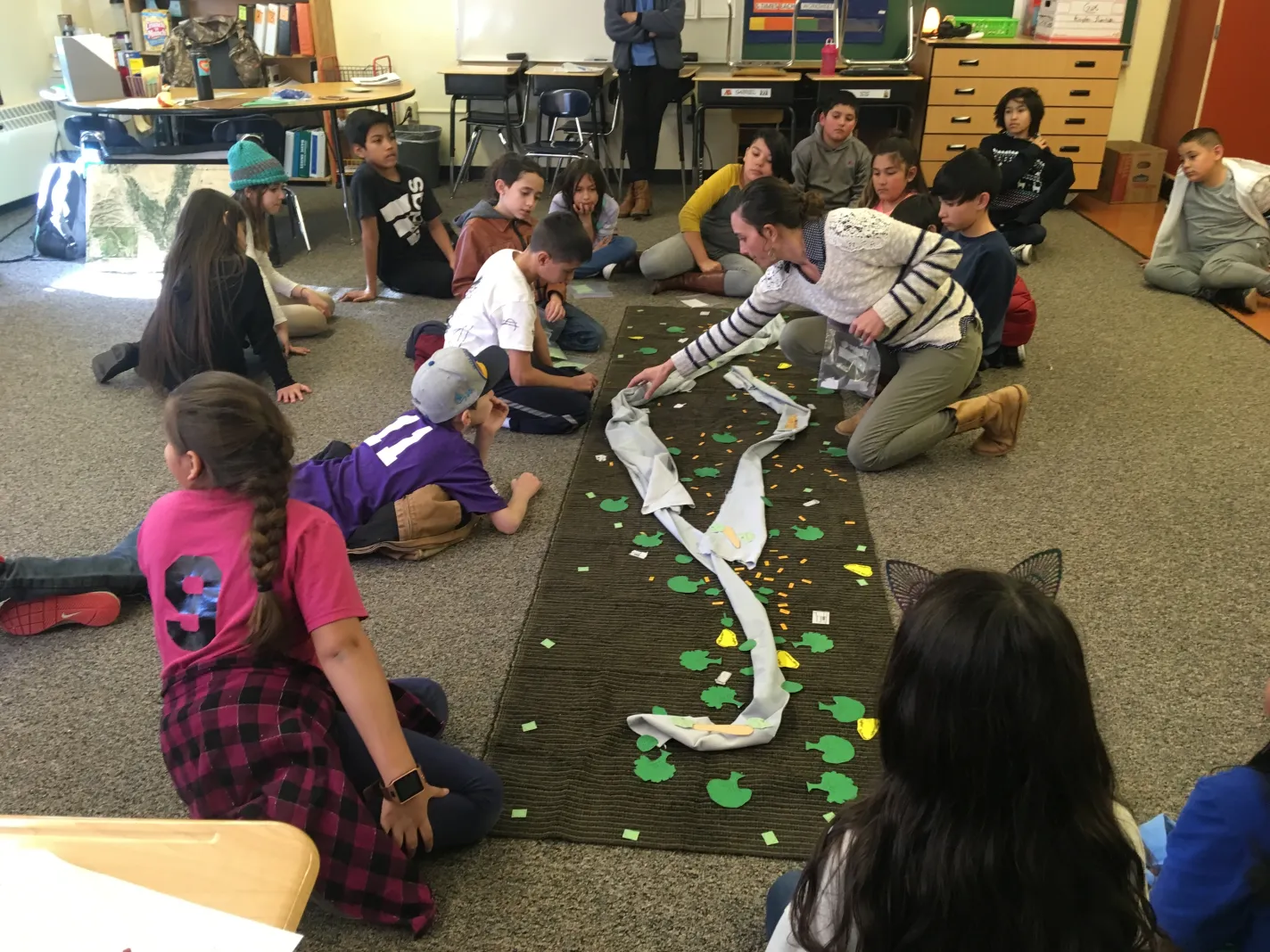The River Ecosystem
The Rio Grande is the final destination for all water in our watershed. From the mountains in the form of snow melt, to rainfall that lands on and moves across our desert ecosystems, agricultural lands, and urban centers- water travels through both natural features and man-made structures to makes its way to the Rio Grande and the Bosque ecosystem it supports.
Understanding how humans, plants, and animals rely on this important waterbody and how human impact has drastically changed the river, creates the discussion of what we can do to protect our river and the river ecosystem. In the River Ecosystem unit students are given the opportunity to rebuild their relationship with the Rio Grande in a way that emphasizes ecosystem interactions, historical change, and the need to conserve and protect this community resource for both our city and for the greater Southwest region. Students experience this by way of a pre-lesson on the history of the Rio Grande and a field trip to the Bosque to pole plant native trees.
Before students join us outdoors in the Bosque for the field trip, they receive an in-class presentation that demonstrates the river ecology prior to human settlement and development in the Middle Rio Grande Valley and current river ecology post flood control management. This lesson helps shape an understanding why pole planting is an important local conservation effort to restore the riparian ecosystem.

Students join local conservationists to pole plant cottonwoods and coyote willows along the Bosque using hands augers, shovels and sweat! Students plant as many trees as they can during the field trip and RiverXchange@ students help plants hundreds of trees every year.

- How do changes in water quality and availability affect living things in our ecosystem?
- What role does the Bosque play in our watershed?
- What role do soil and wetlands play in our watershed?
- What are some of the ways scientists can determine the health of the Rio Grande?
- What actions can all of us take to improve the health of our river ecosystem?
5-LS1-1. Support an argument that plants get the materials they need for growth chiefly from air and water.
5-LS2-1. Develop a model to describe the movement of matter among plants, animals, decomposers, and the environment.
5-ESS2-1. Develop a model using an example to describe ways the geosphere, biosphere, hydrosphere, and/or atmosphere interact.
5-ESS3-1. Obtain and combine information about ways individual communities use science ideas to protect the Earth’s resources and environment.
